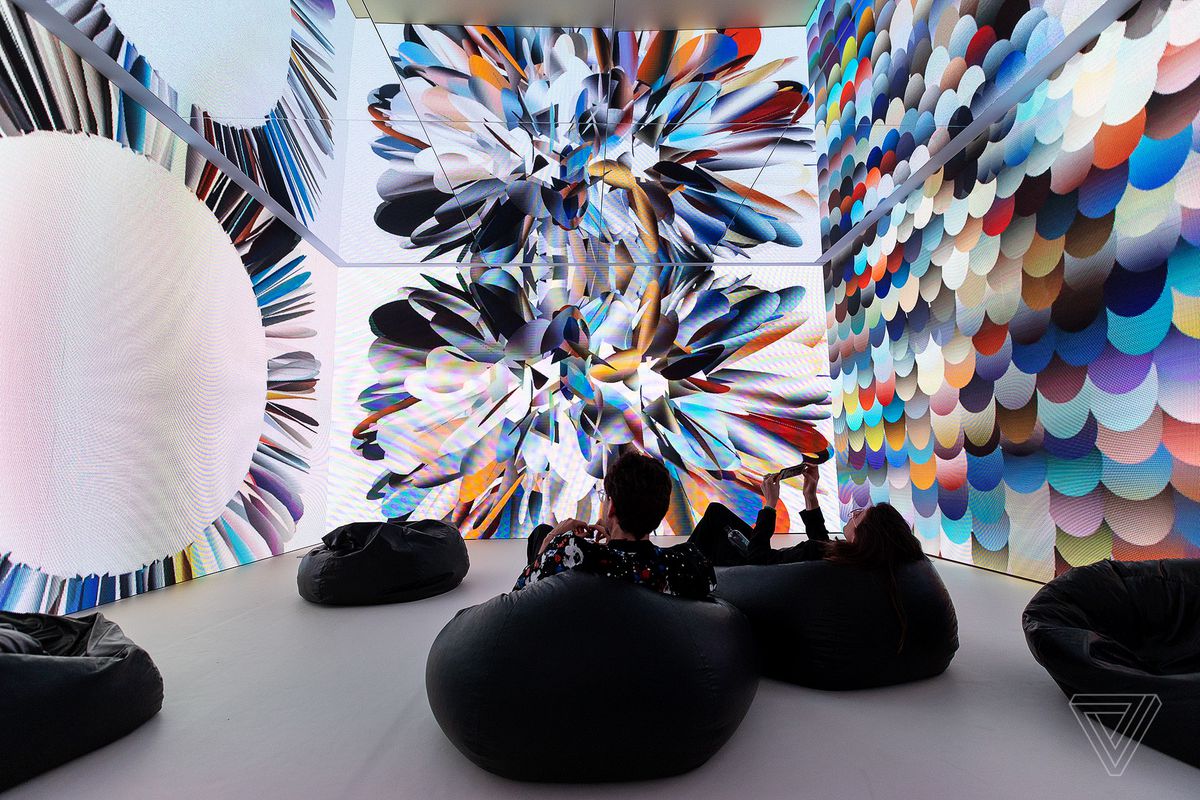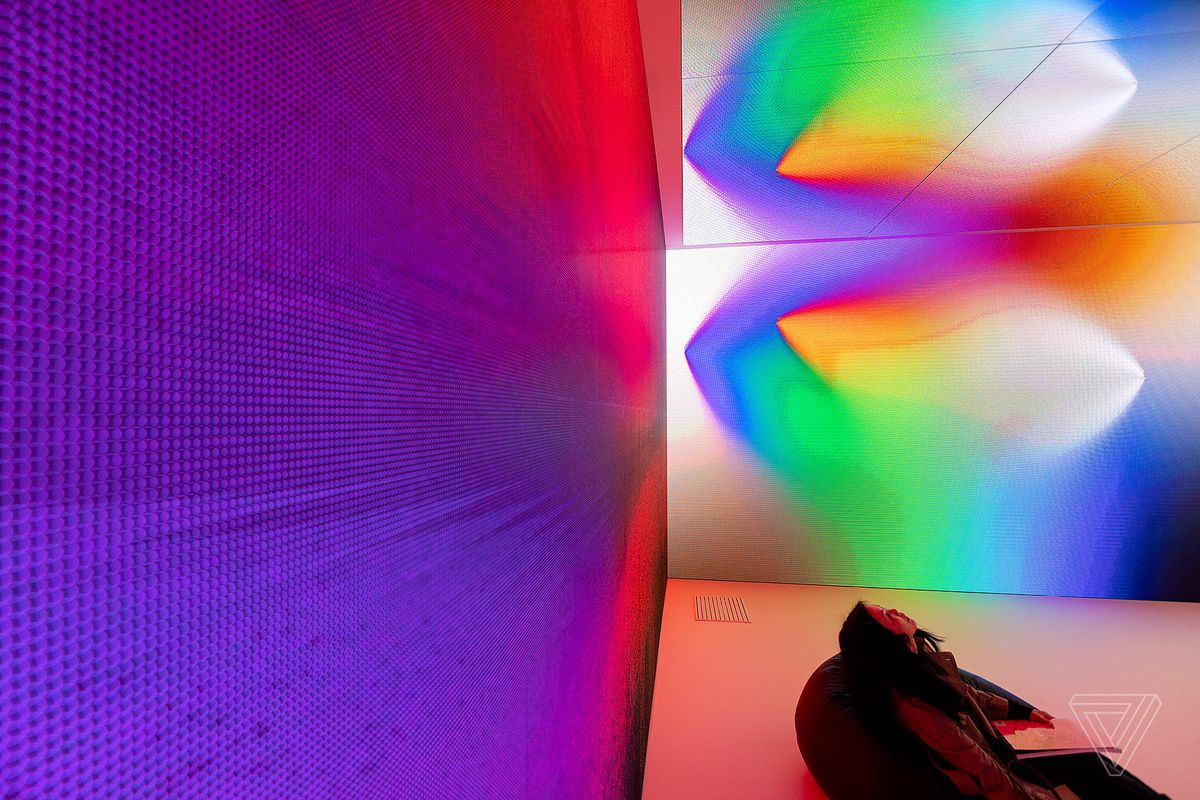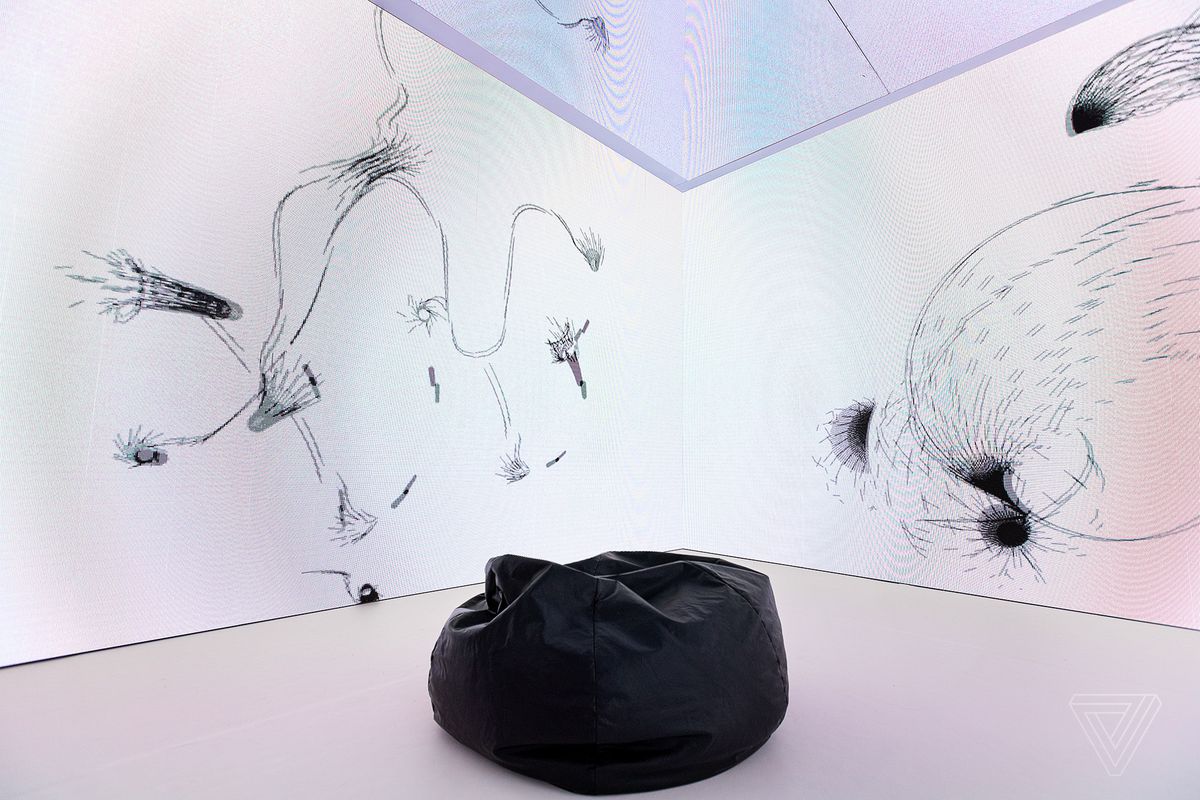Zach Lieberman’s interactive art creates moments of wonder and surprise
Zach Lieberman is an extremely busy person. He’s a designer, computer programmer, educator, and artist (he’s also one of my biggest inspirations). Among other things, he’s one of the creators of openFrameworks, an open-source C++ library that is one of the coolest ways to dive into making striking visuals with code. A lot of his work is interactive and playful in unexpected ways — which just so happens to be one of his goals.
Recently Lieberman has been teaching at the School for Poetic Computation and continuing to experiment. He had an installation at Frieze Fair and spoke at the 11th annual Adobe 99U Conference this past week. I reached out to him to learn more about his process, motivations, and thoughts on AR.
This interview has been condensed and edited for clarity.

You’re probably one of the busiest artists I follow. How do you stay so busy and balance work and personal life and remain so active?
I have this rule, which is to spend one-third of my time doing artwork, one-third of my time doing commercial work, and one-third of my time teaching.
In the back of my mind, I’m always thinking, how is the balance? Am I spending enough time in the classroom, am I spending enough time really thinking art? Am I spending that time, you know, working at companies? And I find these three things work really well for me, I think about them as almost three legs of a stool.
Speaking of discipline, you do a design every day or almost every day?
It’s been almost every day. I’m not super religious about it — there’s some people who do the Seinfeld rule, where you have to like cross it off the calendar.
When you’re doing commercial work you have a road map, or you have a problem you need to solve. But the sketching for me is almost like a meditative process where I just want to not think too much and see where my intuitions lead me.
Some people have the approach of doing a daily thing like, “I’m going to write a song every day” or “write a poem every day” — but I actually try to not make something new, but just say, “How can I change or iterate on something that I’ve done before, in order to make something new? What’s the smallest change that I can do in order to make a new thing?”
That takes a lot of pressure off. I find a lot of things that bring you joy through sketching is seeing how ideas change and evolve and go a different direction. I think if I had to do something new every day, I would stop really quickly. It’d be hard.
I just checked out your Instagram and saw you playing around with custom filters. Are you enjoying that?
I’ve done some work previously with Facebook, in which I had some experience with the tools.
I think they were reaching out to different artists and seeing if they will try it. I really like AR, but I don’t love their environment for making Instagram sketches. I really like coding it on my own in openFrameworks, the sort of tools I’m really used to. So from a coding perspective, I don’t love it, but I really love making things and sharing them. One of the interesting things about making an Instagram filter is you can immediately share it with people.
I have so much fun with these things and I love it when it’s in somebody else’s hands and you see all the joy that they have with it. The same thing happened last year when we released the weird type app.
Where do you see the future of AR going?
There’s a few problems that are in the process of being solved, like persistence. If you’re doing something in the AR space right now, it’s not really tied to a specific location.
I think it’s really interesting when you can have AR experiences that are tied to geography and real space. Not AR installations like a park, but more of a very specific thing, like “I’m going to create content that when I come back in a day, in a month, in a year, in five years, it’s still there.”

Do you think there are practical uses for AR and interactive tech outside of just art?
Yeah, I mean, you know the Google Translate app, where if you’re in a foreign country and you wave your phone around and point it at a sign, you see the text change. You’re in France and you take your phone out over a menu, or you’re at the train station and it’s translating the signs — that’s magic. That’s completely a magical, practical use of AR.
I think people are still trying to figure out what to do. It’s a new-ish medium, so obviously a lot of people are trying to figure out the grammar of AR.
Can you explain how you approach your work?
I think for interactive work you always want to make things that are immediately understandable and that have depth. So I guess you would say, like, “low floor, high ceiling.” Easy to understand and have a lot of expressive potential.
One thing I try to do, especially with the Instagram sketches, is try to stick with very simple things, like simple geometry. What happens if you start with a circle and then you rotate it, and you extrude it and you revolve it? It’s almost like using geometry as a starting point, and glitching or changing through things.
The other thing that I’m really passionate about is motion, and how movement and animation can create an emotional response.
How do you like teaching?
I love it. Sometimes I feel like I’m a vampire because students have so much energy. And this stuff is new to them, and in many cases, my students have never written code before. And when you see them having discoveries, there’s these small wins that they have, and it just makes me really happy. I think if I wasn’t teaching, I would feel really jaded. Working with students really opens my eyes and I feel like I get so much from them that I can bring to my practice.
You’re one of the creators of openFrameworks. Can you tell me a little more about that?
I code in C++, [because] it’s really fast, especially for doing computer vision. A lot of my projects use computer vision to be interactive and respond to your body.
So we’ve made a library of code that makes it easier for people to get started, where we take the things that we’re learning as artists and publish them in the form of this tool. The broader theory is that artistic practice is a form of research. And similar to how a car company would have an R&D department, artists are a kind of R&D department.
But if you take the job of research seriously, how do you publish the results of the research? And open source is one way of publishing. So open frameworks is the C++ tool that allows you to get started quickly to get a window to draw. There’s lots of examples, with working in geometry and working sound and video and computer vision, and all these things that are kind of building blocks for creating interactive work.

I follow #openframeworks on Instagram and so much of the work is mesmerizing. I just wanted to say thank you for creating something people use to make amazing art.
[laughter] Yeah, I mean, for me it’s a joy. I helped make this open-source tool, I helped make the School for Poetic Computation [a school that approaches writing code like creative writing].
One of the things that I tried to say a lot in my lectures, and whenever I can, when I’m talking to students was, “We need more tools.” The world is hungry for tools. We need more open-source frameworks. As a strategy, as an artist, if you can build communities, it’s one really great way to have success. There’s your craft and making and sharing, but also what can you do to make a community and grow it?
You recently had an installation at Frieze, which looked amazing. Can you tell us a little about what you shared there?
I had a three-channel video artwork which was based on my daily sketches, set to music by Jemapur, and an interactive installation called Body Sketches, which uses your body as input and abstracts and manipulates the forms it finds.
What is next for you?
Last year, I got really into printing. All my work is motion, it’s always an animated form. But how do you capture it? How can you find these kind of unique moments? It’s like a wildlife photographer, to find something that’s interesting and bring it to life. So I’ll probably be doing some more of that.
I’ve got a pen plotter. It’s a device that robotically controls a pen. And it’s really interesting to make graphics with. It’s called AxiDraw. It’s basically just an XY plotter. I’m totally fascinated with it. As soon as things chill out I’m going to try and experiment with the potter. Potter’s feel really different, the kind of visual language when the pen touches the paper and goes across and comes up is not the same. It’s like thick at the start and then it gets thin and then it gets thick again. It kind of feels almost human like there’s a real physical material there, and there’s some qualities of it that I think you don’t see on a computer screen, you don’t see in an inkjet printer.
https://www.theverge.com/2019/5/10/18564182/zach-lieberman-interactive-art-animation-movement-openframeworks-art-club